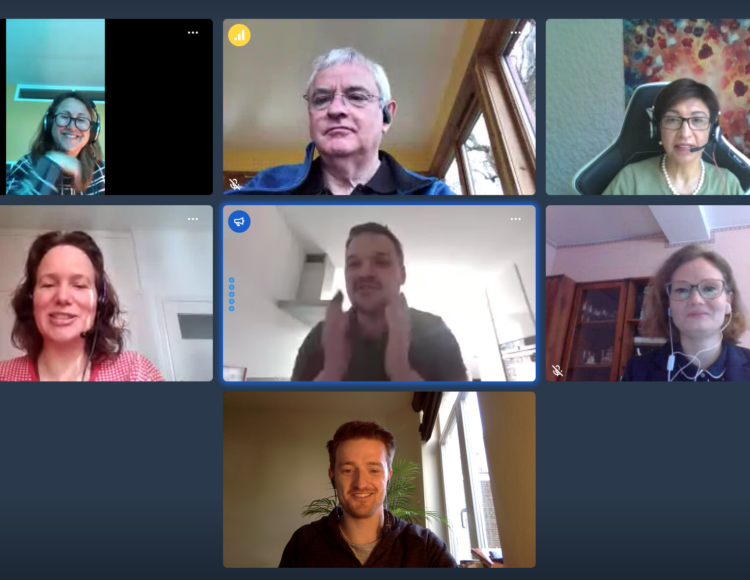Housing Europe was delighted to welcome online a number of experts to its webinar on ‘Indicators for Circular Economy’ on April 23rd that took part within the framework the Horizon 2020 HOUSEFUL project, which aims to provide innovative circular solutions and services for the housing sector.
Today, different frameworks, assessment tools, certification schemes, indicators, are being used by housing providers and building partners in order to measure, monitor and manage a more efficient use of scarce resources. Housing providers are also looking for synergies to increase circularity levels in combination with affordability, durability, safety, health and comfort in the residential environment. The webinar offered an opportunity to explore the tools and initiatives that are used to develop Circular Indicators and Methodologies in order to help housing actors achieve their ambitious goals:
Daniel Checa (Min.2:49), from LEITAT provided a concise overview of the ambitions and methods of the HOUSEFUL project. He also discussed the challenges of looking at the supply and resource chains in a non-linear way; highlighting the importance of new ways of thinking like those being used by the HOUSEFUL project. In order for this to be successful, HOUSEFUL partners have seen the value and necessity of co-creation and working with building residents.
Josephina Lindblom (Min.10:58), from the DG Environment walked us through her work on the invaluable Level(s) project, which “is not about providing indicators, it is about providing a common language”. Her presentation really brought home the negative role played by the construction sector in terms of CO2 emissions. However, she also provided hope for the future, highlighting the work many countries are now doing to better monitor life-cycle emissions and encouraging changes in behaviour.
Michiel Ritzen (Min.23:11), from Zuyd University, discussed exactly why it is so important to have a well-developed methodology for the evaluation of circularity. He discussed his work on the SuperLocal project, which is reusing the materials of two vacant high-rise apartment complexes in Kerkrade in the Netherlands for the construction of approximately 130 new homes and provision of new public spaces. The SuperLocal project, which Housing Europe organised a recent study visit to, shows the potential for greater efficiencies in embodied energy (re-use, urban mining, bio-sourced materials). He also highlighted the importance of building ‘components’ which are ‘Designed for Deconstruction’.
Paul Quinn (Min.35:24), Director of Regeneration at the Clarion Housing Group in England presented the excellent work of the Group in delivering circular buildings. He explained how their work is built on the principles of 1) building in layers (designing out waste, modular construction elements, buildings made up of reusable components), 2) community led delivery of real social value (community design input, promoting sharing economy, community recycling) and 3) waste hierarchy (recovery of demolition materials, excellence in building waste management, deconstruction plans).
Arnau Gonzalez (Min.45:06), from AIGUSOL (also a HOUSEFUL partner), outlined the approach that the project is developing to assess circularity in its Demo buildings. The approach is aligned to the Level(s) initiative described by Jospehina from DG Environ. It takes into consideration material resources, energy, water, social issues, environmental impact and economic value.
Rachel Louiws (Min.1:00:10) from Turntoo, presented the method and indicators used to value and assess the lifetime of materials through the Madaster service. The ‘Madaster Circularity Indicator’ assesses the level of circularity of each building between 0 and 100% based on the user’s uploaded information to the Madaster platform. The assessment takes place over ot only the construction phase, but also the user phase and the end of life phase. The financial value of buildings as material banks works to incentivise building owners to increase circularity.
On behalf of both ourselves at Housing Europe and all of our partners in the HOUSEFUL project, we like to off our sincerest thanks to all of those speakers and attendees who helped to make this such a great event.
You can view a recording of the webinar: here
The presentations of the speakers can be found: below
We would also encourage any of you working on delivering circular economy in the construction sector, either directly or indirectly, to sign-up for the Houseful ‘Collaborative Community of Housing Experts’ (CCHE) forum to get and share insights into the challenges and opportunities associated with circular economy for housing providers.
To access the CCHE forum, please sign-up here
To see more information about HOUSEFUL, you can take a look at our website: here
